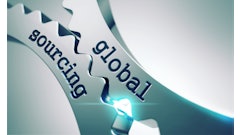
Data is the lifeblood of any procurement department. From assessing the viability of potential third-party vendors to helping their organization find areas to reduce costs, all the information procurement teams need to make smarter decisions exists in a variety of disparate locations.
This has always been the case. In fact, 64% of procurement decision-makers cite data analytics as the key to making operational enhancements, according to Amazon’s 2025 State of Procurement Report.
But in recent years, procurement departments’ responsibilities have proliferated and their jobs have seen exponential jumps in complications. Long gone are the days where they were responsible for helping organizations select the best provider among four companies in four different categories.
The days of “nobody gets fired for hiring IBM” are long gone; replaced with a dynamic environment where suppliers can change overnight due to revolutionary leaps in technology, primarily artificial intelligence (AI). That same technology can help procurement departments make sense of the proliferation of data that arises with a dynamic purchasing landscape. A 2023 study produces the stark details: it found that the average organization worked with 88 third-party vendors.
First, they need to make sure they have usable data. AI can help clean and supplement their own data to parse and make key decisions around. Then they need the right tools and platforms to pull in third-party data that can help them make smarter decisions.
Here are the various activities that procurement teams can leverage data to make better decisions.
Contract assessment and negotiation
Procurement departments are first and foremost tasked with helping their organizations identify the best possible vendors. The best way to keep costs at bay is to head them off before a relationship begins. As businesses become more multi-faceted and their operations more complicated, procurement teams can drown under the data required to make their case for cost reductions or additional services. AI and automation can identify the data required to make more informed decisions and machine learning can replace dozens of consultants pouring over excel spreadsheets to produce a singular answer: does this price justify the services provided or do we need to counter-propose to get the value we need?
Spend analysis and cost reduction
Of course, any company that has been around for more than a year likely already has several contracts already signed with third-party suppliers. While “procure” means to acquire, the reality is the department has long been responsible for the holistic management of costs. If procurement professionals and corporate lawyers have done their jobs, there is an opportunity to renegotiate terms based on external factors. Perhaps the raw costs of the supplier have plunged dramatically, which can be anticipated in many AI-driven businesses, or the company the procurement team is representing has massive costs increases that necessitate hard cost cuts. The variables a procurement team needs to track have grown significantly in the digital data revolution. Only AI can truly unearth the justifications for cost savings.
In addition, procurement teams can help the overall business look at employee productivity data compared to supplier expenditures to determine whether the imbalance means too much work is going to external parties instead of keeping salaried employees occupied. This is an especially likely scenario.
Some companies make some noise about how their employees should treat consultants as a last resort, only to be hired if employees and AI can’t do the same work that would be farmed out to those consultants.
Other companies have underutilized employees and tried to supplement them with expensive management consultants, expressing shock when they have to lay off 10% of their workforce.
Supplier performance management
The price you pay third-party vendors for either products or services isn’t just a consideration at contract signings. Is the vendor providing the approved-upon value? Have they made updates and enhancements per the terms of the contract? Are they meeting the sustainability and ESG goals your organization requires? It’s often too much to expect the employees using these tools to keep track of what should be happening. They are primarily focused on getting the most out of the solutions they have on hand, not measuring it against what contracts say they will provide.
Procurement can and should serve as a strong pillar against service delivery failures from vendors. They know where the organization’s leverage points are and what other vendors are promising.
Understanding whether your third-party vendors are providing the services they are contractually obligated to provide should be a crucial component.
And, finally, procurement teams can use data to identify ways vendor and company can work smarter together, through shared services, APIs, or other technological enhancements that drive win-win environments.
Procurement departments run on data. AI is their compass.
As third-party vendor networks expand, AI helps procurement teams turn raw data into actionable intelligence, driving smarter, faster, and more confident decisions. It empowers organizations to negotiate effectively with new suppliers, uncover hidden savings with existing partners, and achieve results that once required costly consultants.
















![Pros To Know 2026 [color]](https://img.sdcexec.com/mindful/acbm/workspaces/default/uploads/2025/08/prostoknow-2026-color.mduFvhpgMk.png?ar=16%3A9&auto=format%2Ccompress&bg=fff&fill-color=fff&fit=fill&h=135&q=70&w=240)